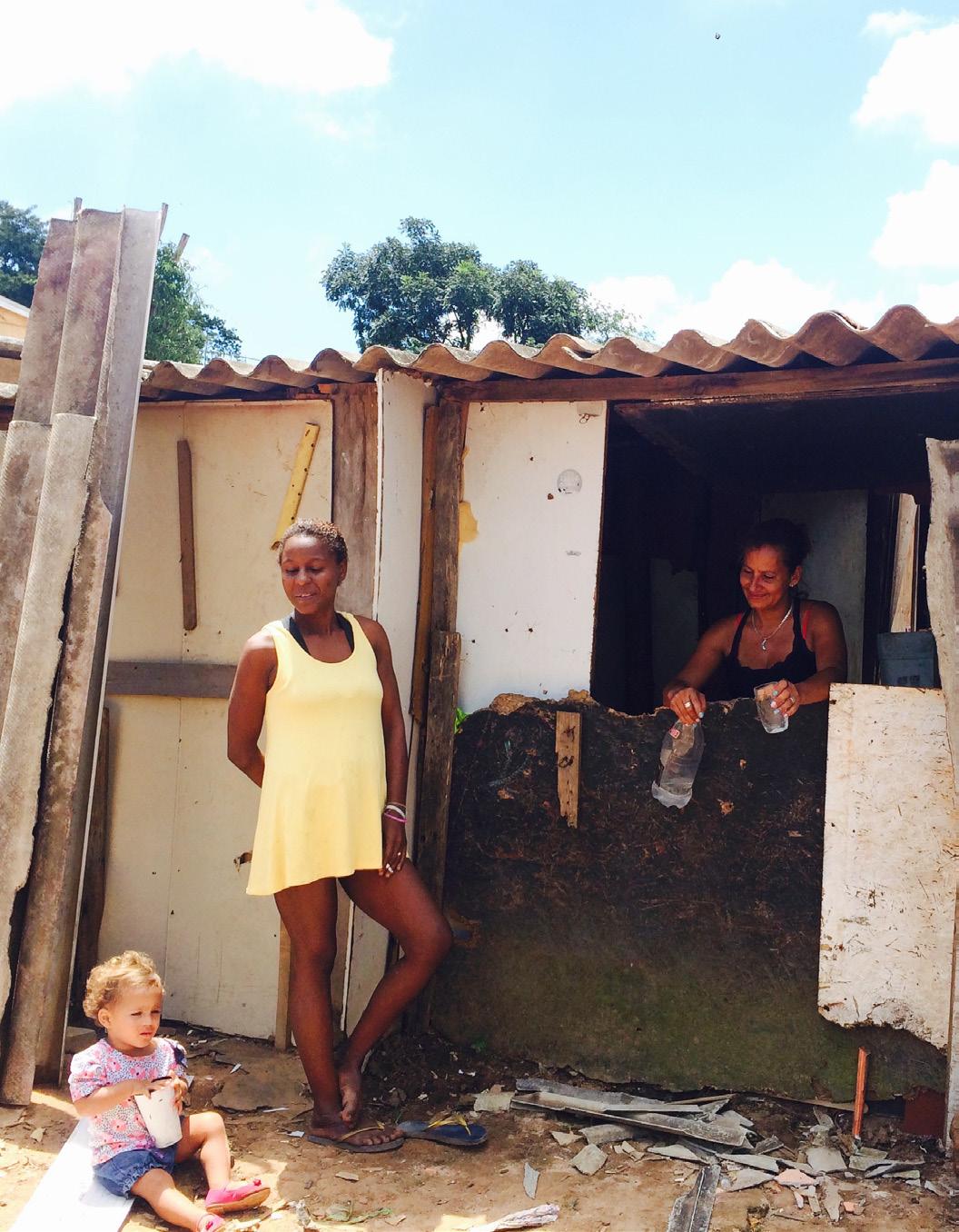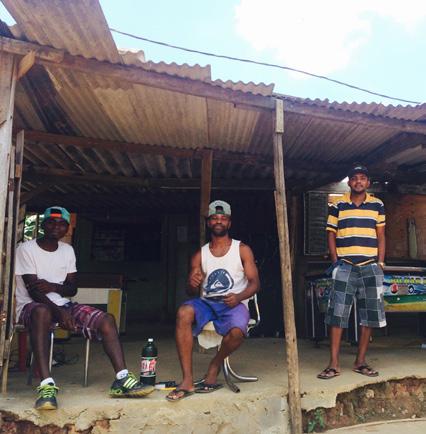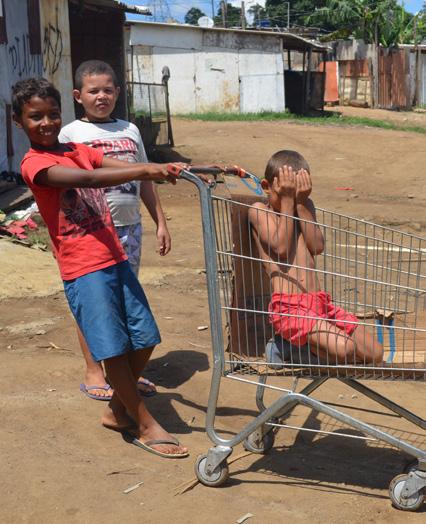
2 minute read
Problem Identification And Relevance
Every month, the Association organizes a general meeting open to all residents, usually highly attended with some 300 residents, in their headquarters. During these meetings, the Association facilitates decision-making processes among residents through consensus-building mechanisms. Occasionally, external non-profit organizations and religious groups approach the Occupation to offer educational and cultural programming for children and youth, and residents decide on which of these organizations they will engage.
To house these opportunities, our partners voiced the need for a larger, multi-purpose space within the Occupation that can foster educational and cultural growth. Therefore, the Cultural Anchieta plan aims to build a new community center that incorporates a church, environmental education, cultural space, and an open space playground.
165 (previous) Residents Enjoying Time Together.
167 (left) Residents Taking Care of Child Playing.
Taubman College Team recognizes that a community center is an important place for community building, public engagement and organizing. Ocupacao Anchieta lacks public spaces, recreational centers, and playgrounds (Aulicino, n.d.). Taubman Team’s survey results demonstrate the Occupation residents placed playgrounds at the top of the facilities and public spaces they would like to see built first. Furthermore, during our client-partner interview, informal interviews, and the community meeting, Association residents and coordinators alike informed the Taubman Team of the plans to build a cultural cluster next to the headquarters of the Association. The facilities and spaces consist of a Catholic church, a cultural center with a dance area, and a playground. The Occupation residents identified and prioritized these three facilities before Taubman Team arrived.
Residents prioritized the cultural center with an accompanying dance floor is a priority to the Occupation because children and youth practice Capoeira, and hold dance classes, on the patio of the Association headquarters. Although, the patio has a roof, the lack of walls prevents classes from taking places when in the cold, windy or strong rainy days. Furthermore, students no changing rooms or adequate floors for the lessons. The Occupation has only one football field and no playgrounds. There is are also no designated spaces for children to gather together and play. Children often play around their homes and in the roads, which explains why residents selected playgrounds as their top facility in the survey. Between 600 to 700 families live in the Occupation, with hundreds of children, building a playground is important.
Social events in the Occupation currently take place in the Association headquarters. The headquarters is the only facility of this kind in the
settlement, and its small size does not allow for more than one event at time. For instance, the Association headquarters is also used for healthcare providers to conduct free eye exams, dental checkups, and preventive care. Additionally, there is a proposal for a Catholic church in the Occupation. There are currently three evangelical churches on-site. The request to build the Catholic church is a desire reflected from both the Association and residents. The Association already has a space near the current community center that has been designated for the proposed church site.
The Cultural Anchieta plan is grassroots led from the beginning and incorporates a participatory methodology to ensure that residents continue to engage during the design and implementation process.

168 Residents in Local Bar on Sunday.
166 Children Playing with Shopping Cart.







